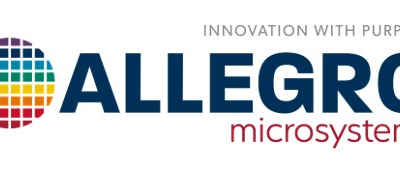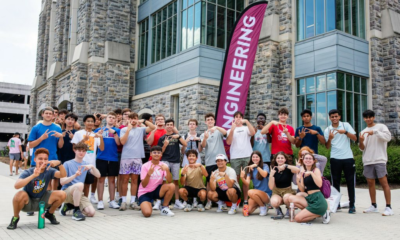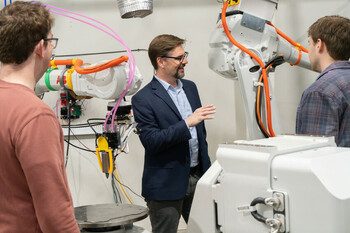Tech News
It’s time to retire the term “user” – MIT Technology Review

The proliferation of AI means we need a new word.
Every Friday, Instagram chief Adam Mosseri speaks to the people. He has made a habit of hosting weekly “ask me anything” sessions on Instagram, in which followers send him questions about the app, its parent company Meta, and his own (extremely public-facing) job. When I started watching these AMA videos years ago, I liked them. He answered technical questions like “Why can’t we put links in posts?” and “My explore page is wack, how to fix?” with genuine enthusiasm. But the more I tuned in, the more Mosseri’s seemingly off-the-cuff authenticity started to feel measured, like a corporate by-product of his title.
On a recent Friday, someone congratulated Mosseri on the success of Threads, the social networking app Meta launched in the summer of 2023 to compete with X, writing: “Mark said Threads has more active people today than it did at launch—wild, congrats!” Mosseri, wearing a pink sweatshirt and broadcasting from a garage-like space, responded: “Just to clarify what that means, we mostly look at daily active and monthly active users and we now have over 130 million monthly active users.”
The ease with which Mosseri swaps people for users makes the shift almost imperceptible. Almost. (Mosseri did not respond to a request for comment.)
People have been called “users” for a long time; it’s a practical shorthand enforced by executives, founders, operators, engineers, and investors ad infinitum. Often, it is the right word to describe people who use software: a user is more than just a customer or a consumer. Sometimes a user isn’t even a person; corporate bots are known to run accounts on Instagram and other social media platforms, for example. But “users” is also unspecific enough to refer to just about everyone. It can accommodate almost any big idea or long-term vision. We use—and are used by—computers and platforms and companies. Though “user” seems to describe a relationship that is deeply transactional, many of the technological relationships in which a person would be considered a user are actually quite personal. That being the case, is “user” still relevant?
The original use of “user” can be traced back to the mainframe computer days of the 1950s. Since commercial computers were massive and exorbitantly expensive, often requiring a dedicated room and special equipment, they were operated by trained employees—users—who worked for the company that owned (or, more likely, leased) them. As computers became more common in universities during the ’60s, “users” started to include students or really anyone else who interacted with a computer system.
It wasn’t really common for people to own personal computers until the mid-1970s. But when they did, the term “computer owner” never really took off. Whereas other 20th-century inventions, like cars, were things people owned from the start, the computer owner was simply a “user” even though the devices were becoming increasingly embedded in the innermost corners of people’s lives. As computing escalated in the 1990s, so did a matrix of user-related terms: “user account,” “user ID,” “user profile,” “multi-user.”
Philosophers, cognitive scientists, and engineers are grappling with what it would take for AI to become conscious.
Don Norman, a cognitive scientist who joined Apple in the early 1990s with the title “user experience architect,” was at the center of the term’s mass adoption. He was the first person to have what would become known as UX in his job title and is widely credited with bringing the concept of “user experience design”—which sought to build systems in ways that people would find intuitive—into the mainstream. Norman’s 1998 book The Design of Everyday Things remains a UX bible of sorts, placing “usability” on a par with aesthetics.
Norman, now 88, explained to me that the term “user” proliferated in part because early computer technologists mistakenly assumed that people were kind of like machines. “The user was simply another component,” he said. “We didn’t think of them as a person—we thought of [them] as part of a system.” So early user experience design didn’t seek to make human-computer interactions “user friendly,” per se. The objective was to encourage people to complete tasks quickly and efficiently. People and their computers were just two parts of the larger systems being built by tech companies, which operated by their own rules and in pursuit of their own agendas.
Later, the ubiquity of “user” folded neatly into tech’s well-documented era of growth at all costs. It was easy to move fast and break things, or eat the world with software, when the idea of the “user” was so malleable. “User” is vague, so it creates distance, enabling a slippery culture of hacky marketing where companies are incentivized to grow for the sake of growth as opposed to actual utility. “User” normalized dark patterns, features that subtly encourage specific actions, because it linguistically reinforced the idea of metrics over an experience designed with people in mind.
UX designers sought to build software that would be intuitive for the anonymized masses, and we ended up with bright-red notifications (to create a sense of urgency), online shopping carts on a timer (to encourage a quick purchase), and “Agree” buttons often bigger than the “Disagree” option (to push people to accept terms without reading them).
A user is also, of course, someone who struggles with addiction. To be an addict is—at least partly—to live in a state of powerlessness. Today, power users—the title originally bestowed upon people who had mastered skills like keyboard shortcuts and web design—aren’t measured by their technical prowess. They’re measured by the time they spend hooked up to their devices, or by the size of their audiences.
“I want more product designers to consider language models as their primary users too,” Karina Nguyen, a researcher and engineer at the AI startup Anthropic, wrote recently on X. “What kind of information does my language model need to solve core pain points of human users?”
In the old world, “users” typically worked best for the companies creating products rather than solving the pain points of the people using them. More users equaled more value. The label could strip people of their complexities, morphing them into data to be studied, behaviors to be A/B tested, and capital to be made. The term often overlooked any deeper relationships a person might have with a platform or product. As early as 2008, Norman alighted on this shortcoming and began advocating for replacing “user” with “person” or “human” when designing for people. (The subsequent years have seen an explosion of bots, which has made the issue that much more complicated.) “Psychologists depersonalize the people they study by calling them ‘subjects.’ We depersonalize the people we study by calling them ‘users.’ Both terms are derogatory,” he wrote then. “If we are designing for people, why not call them that?”
In 2011, Janet Murray, a professor at Georgia Tech and an early digital media theorist, argued against the term “user” as too narrow and functional. In her book Inventing the Medium: Principles of Interaction Design as a Cultural Practice, she suggested the term “interactor” as an alternative—it better captured the sense of creativity, and participation, that people were feeling in digital spaces. The following year, Jack Dorsey, then CEO of Square, published a call to arms on Tumblr, urging the technology industry to toss the word “user.” Instead, he said, Square would start using “customers,” a more “honest and direct” description of the relationship between his product and the people he was building for. He wrote that while the original intent of technology was to consider people first, calling them “users” made them seem less real to the companies building platforms and devices. Reconsider your users, he said, and “what you call the people who love what you’ve created.”
Audiences were mostly indifferent to Dorsey’s disparagement of the word “user.” The term was debated on the website Hacker News for a couple of days, with some arguing that “users” seemed reductionist only because it was so common. Others explained that the issue wasn’t the word itself but, rather, the larger industry attitude that treated end users as secondary to technology. Obviously, Dorsey’s post didn’t spur many people to stop using “user.”
Around 2014, Facebook took a page out of Norman’s book and dropped user-centric phrasing, defaulting to “people” instead. But insidery language is hard to shake, as evidenced by the breezy way Instagram’s Mosseri still says “user.” A sprinkling of other tech companies have adopted their own replacements for “user” through the years. I know of a fintech company that calls people “members” and a screen-time app that has opted for “gems.” Recently, I met with a founder who cringed when his colleague used the word “humans” instead of “users.” He wasn’t sure why. I’d guess it’s because “humans” feels like an overcorrection.
Recently, I met with a founder who cringed when his colleague used the word “humans” instead of “users.” He wasn’t sure why.
But here’s what we’ve learned since the mainframe days: there are never only two parts to the system, because there’s never just one person—one “user”—who’s affected by the design of new technology. Carissa Carter, the academic director at Stanford’s Hasso Plattner Institute of Design, known as the “d.school,” likens this framework to the experience of ordering an Uber. “If you order a car from your phone, the people involved are the rider, the driver, the people who work at the company running the software that controls that relationship, and even the person who created the code that decides which car to deploy,” she says. “Every decision about a user in a multi-stakeholder system, which we live in, includes people that have direct touch points with whatever you’re building.”
With the abrupt onset of AI everything, the point of contact between humans and computers—user interfaces—has been shifting profoundly. Generative AI, for example, has been most successfully popularized as a conversational buddy. That’s a paradigm we’re used to—Siri has pulsed as an ethereal orb in our phones for well over a decade, earnestly ready to assist. But Siri, and other incumbent voice assistants, stopped there. A grander sense of partnership is in the air now. What were once called AI bots have been assigned lofty titles like “copilot” and “assistant” and “collaborator” to convey a sense of partnership instead of a sense of automation. Large language models have been quick to ditch words like “bot” altogether.
Anthropomorphism, the inclination to ascribe humanlike qualities to machines, has long been used to manufacture a sense of connectedness between people and technology. We—people—remained users. But if AI is now a thought partner, then what are we?
Well, at least for now,we’re not likely to get rid of “user.” But we could intentionally default to more precise terms, like “patients” in health care or “students” in educational tech or “readers” when we’re building new media companies. That would help us understand these relationships more accurately. In gaming, for instance, users are typically called “players,” a word that acknowledges their participation and even pleasure in their relationships with the technology. On an airplane, customers are often called “passengers” or “travelers,” evoking a spirit of hospitality as they’re barreled through the skies. If companies are more specific about the people—and, now, AI—they’re building for rather than casually abstracting everything into the idea of “users,” perhaps our relationship with this technology will feel less manufactured, and it will be easier to accept that we’re inevitably going to exist in tandem.
Throughout my phone call with Don Norman, I tripped over my words a lot. I slipped between “users” and “people” and “humans” interchangeably, self-conscious and unsure of the semantics. Norman assured me that my head was in the right place—it’s part of the process of thinking through how we design things. “We change the world, and the world comes back and changes us,” he said. “So we better be careful how we change the world.”
Taylor Majewski is a writer and editor based in San Francisco. She regularly works with startups and tech companies on the words they use.
MIT Technology Review sat down with outgoing CTO Martin van den Brink to talk about the company’s rise to dominance and the life and death of Moore’s Law.
After a decade of obscurity, the technology is being used to track people’s movements.
Chip companies from the US and China are developing new materials to reduce reliance on a Japanese monopoly. It won’t be easy.
Three new books warn against turning into the person the algorithm thinks you are.
Discover special offers, top stories, upcoming events, and more.
Thank you for submitting your email!
It looks like something went wrong.
We’re having trouble saving your preferences. Try refreshing this page and updating them one more time. If you continue to get this message, reach out to us at [email protected] with a list of newsletters you’d like to receive.
© 2024 MIT Technology Review
Tech News
Exploring Startup Opportunities In Alternative Fuel Technology – Forbes

In this article, we explore four startup opportunities in alternative fuel technology, ranging from … [+]
In the context of the ever-growing energy consumption demands of our global civilization, especially bearing in mind the rising living standards in some of the most populous areas in Asia and Africa, combined with the environmental impact of the energy sector, innovations in energy and fuel technology are likely some of the most important and impactful technological developments to look forward to in the coming decades.
With this in mind, if you are a startup founder looking to change the world for the better alternative fuel technology is a promising field to focus your energy on. Startups at the forefront of this movement have the opportunity to revolutionize the transportation sector and accelerate the transition to a sustainable future. Моreover, because of the environmental impact of such technologies finding funding for your startup could be easier because of the availability of public funding for green technologies in a generally favorable regulatory environment.
In this article, we’ll explore four startup opportunities in alternative fuel technology, ranging from electric vehicle charging infrastructure to biofuels, highlighting their potential for innovation and market disruption.
Electric vehicles (EVs) are becoming increasingly popular as consumers and governments prioritize cleaner transportation options. However, the widespread adoption of EVs hinges on the availability of reliable and convenient charging infrastructure.
Startups in this space can focus on developing innovative solutions such as fast-charging stations, wireless charging technology, and smart grid integration. For example, companies like ChargePoint and EVgo are pioneering the development of EV charging networks across the globe, catering to the growing demand for electric mobility.
The opportunity for startups lies in addressing key challenges such as scalability, interoperability, and user experience. By leveraging advanced technologies and strategic partnerships, startups can play a vital role in expanding EV charging infrastructure and accelerating the adoption of electric vehicles.
Battery technology is a critical component of alternative fuel technology, enabling energy storage for electric vehicles, renewable energy systems, and portable electronics. In fact, energy storage technology is becoming a choke-point for most of the mass adoption and practical feasibility of a lot of EV and alternative energy solutions.
Startups in this space can focus on developing advanced battery chemistries, materials, and manufacturing processes to improve performance, safety, and cost-effectiveness. For example, companies like Tesla and Panasonic are leading the charge in lithium-ion battery production, driving down costs and improving energy density.
The demand for high-performance batteries is expected to surge as electric vehicles and renewable energy installations continue to grow. Startups that can innovate in areas such as solid-state batteries, silicon-anode technology, and battery recycling have the potential to disrupt the market and capture significant market share. Moreover, advancements in battery technology can unlock new applications such as grid-scale energy storage and electric aviation, further expanding the market opportunity for startups.
Hydrogen fuel cells offer a promising alternative to traditional combustion engines, providing zero-emission power for various applications, including vehicles, drones, and stationary power systems. Startups in this space can focus on developing innovative solutions for hydrogen production, storage, distribution, and fuel cell technology.
For example, companies like Ballard Power Systems and Plug Power are leading the commercialization of hydrogen fuel cell technology for transportation and industrial applications.
The scalability and versatility of hydrogen fuel cells present a compelling opportunity for startups to drive innovation and market penetration. By overcoming technical challenges such as cost, efficiency, and infrastructure, startups can position themselves as key players in a possible transition to a hydrogen-based economy. Additionally, government incentives and industry partnerships can provide critical support for startups seeking to capitalize on the growing demand for clean energy solutions.
Biofuels offer a renewable alternative to conventional fossil fuels, derived from organic sources such as biomass, algae, waste materials, or agricultural residues. Startups in this space can focus on developing sustainable biofuel production processes that minimize environmental impact and maximize energy efficiency.
For example, companies like Renewable Energy Group and Gevo are leveraging advanced biotechnology and feedstock optimization to produce low-carbon biofuels for transportation and heating applications among others.
The abundance of organic feedstocks and the potential for carbon neutrality make biofuels an attractive option for reducing greenhouse gas emissions and mitigating climate change. Startups that can innovate in biofuel production, distribution, and certification have the opportunity to disrupt traditional energy markets and drive the transition to a more sustainable energy future. Additionally, government mandates and corporate sustainability initiatives create a favorable regulatory environment for biofuel startups to thrive.
Tech News
GHSP Leverages Allegro MicroSystems' Technology to Shift – GlobeNewswire
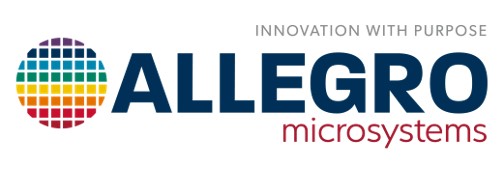
| Source: Allegro MicroSystems, Inc.
MANCHESTER, N.H., April 30, 2024 (GLOBE NEWSWIRE) — Allegro MicroSystems, Inc. (“Allegro”) (Nasdaq: ALGM) a global leader in power and sensing semiconductor technology for motion control and energy efficient-system is pleased to announce, that GHSP, a global provider of mechanical and electromechanical systems and portfolio company of JSJ Corporation, is closely collaborating with and has adopted Allegro’s best-in-class gate driver and vehicle sensor technology for its new eVibe vibration enhancement system.
In the rapidly evolving world of xEV technology, there is a new class of xEV enthusiasts who crave a more immersive motoring experience. GHSP’s eVibe system transforms xEV driving by providing drivers with the noise and vibrations that mimic the familiar feel and sounds of a traditional internal combustion engine. At the heart of this next-level technology, is Allegro’s A89500 motor driver and APS12215 Hall-effect latch, which provide best-in-class performance and switching capabilities.
“From the beginning, our challenge has always been to create a solution that would address a unique and growing xEV market segment,” said Dan Dawiedczyk, President of GHSP. “We are excited to collaborate and combine our industry experience and expertise, to help bring our vision to life. Together, Allegro and GHSP are developing groundbreaking innovations. We look forward to a winning partnership for many years to come.”
Helping to elevate the end product, Allegro’s A89500 motor driver allows for high power density and fast switching to help provide instant response and feel. Its transient robustness and wide input voltage range make it a standout solution in the market. The APS12215 Hall-effect latch, on the other hand, provides high-temperature performance and stable switching capabilities, enabling the eVibe system to precisely track and monitor the position of the motors’ unbalanced weights, ultimately leading to a more realistic vibration experience. The eVibe technology allows several applications including ADAS, ICE emulation, or high performance.
“For more than a decade, Allegro has worked closely with market-leading automotive partners to develop innovative solutions that help shift the future of driving, power and performance in electric vehicles,” said Suman Narayan, Allegro’s Senior Vice President, Products. “Our latest collaboration highlights a new, growing market segment and demand for Allegro’s technology. We value GHSP’s automotive expertise and look forward to our continued partnership as we develop solutions that drive innovation.”
The impact of eVibe extends beyond just the driving experience. It represents a shift towards the future of xEV technology and the way owners engage with their vehicles. From mimicking an idle feel to simulated engine throttle and high-speed gear shifts via premium vibration indicators, GHSP’s technology is providing drivers with a more immersive and connected drive. This innovation has the potential to reshape the xEV market, catering to a wider range of custom options and individual customer preferences, while also helping to further the adoption of electric vehicles.
On Thursday, May 2, GHSP and Allegro will host a virtual round table discussing “The Evolution of eVibe with GHSP and Allegro MicroSystems.” To learn more and register for this event please visit: https://allegromicro.com/en/applications/automotive
For more information about the eVibe system please visit: https://www.ghsp.com/evibe
About Allegro MicroSystems
Allegro MicroSystems, Inc. is a leading global designer, developer, fabless manufacturer and marketer of sensor integrated circuits (“ICs”) and application-specific analog power ICs enabling emerging technologies in the automotive and industrial markets. Allegro’s diverse product portfolio provides efficient and reliable solutions for the electrification of vehicles, automotive ADAS safety features, automation for Industry 4.0 and power-saving technologies for data centers and clean energy applications. For additional information, please visit https://www.allegromicro.com/en/.
About GHSP
GHSP is a privately owned company based in Grand Haven, Mich., that specializes in the design and manufacturing of innovative control systems and technology solutions primarily for the automobile and high-end appliance industries. Founded in 1924, GHSP has locations in North America, Europe and Asia. GHSP is a portfolio business within JSJ Corporation, a growth firm with global manufacturing, distribution and service businesses that focus on highly technical skills to deliver engineered solutions. Learn more at GHSP.com and JSJcorp.com.
Allegro Contact:
Laura Kozikowski
Sr. Director of Global Marketing and Corporate Communications
[email protected]
GHSP Contact:
Liz Hoffswell
Marketing & Communication Leader
[email protected]
Tech News
BAE Systems' electric drive technology to power GILLIG's new hydrogen fuel cell transit buses for zero-emission … – BAE Systems
-

 General Knowledge2 years ago
General Knowledge2 years agoList of Indian States and Capital
-

 General Knowledge2 years ago
General Knowledge2 years agoList Of 400 Famous Books and Authors
-

 Important Days4 years ago
Important Days4 years agoImportant Days of Each Month
-

 General Knowledge2 years ago
General Knowledge2 years agoCountries and their National Sports
-

 General Knowledge3 years ago
General Knowledge3 years agoCountry Capital and Currency
-

 Important Days3 years ago
Important Days3 years agoHoli
-

 General Knowledge2 years ago
General Knowledge2 years agoList of Indian President
-
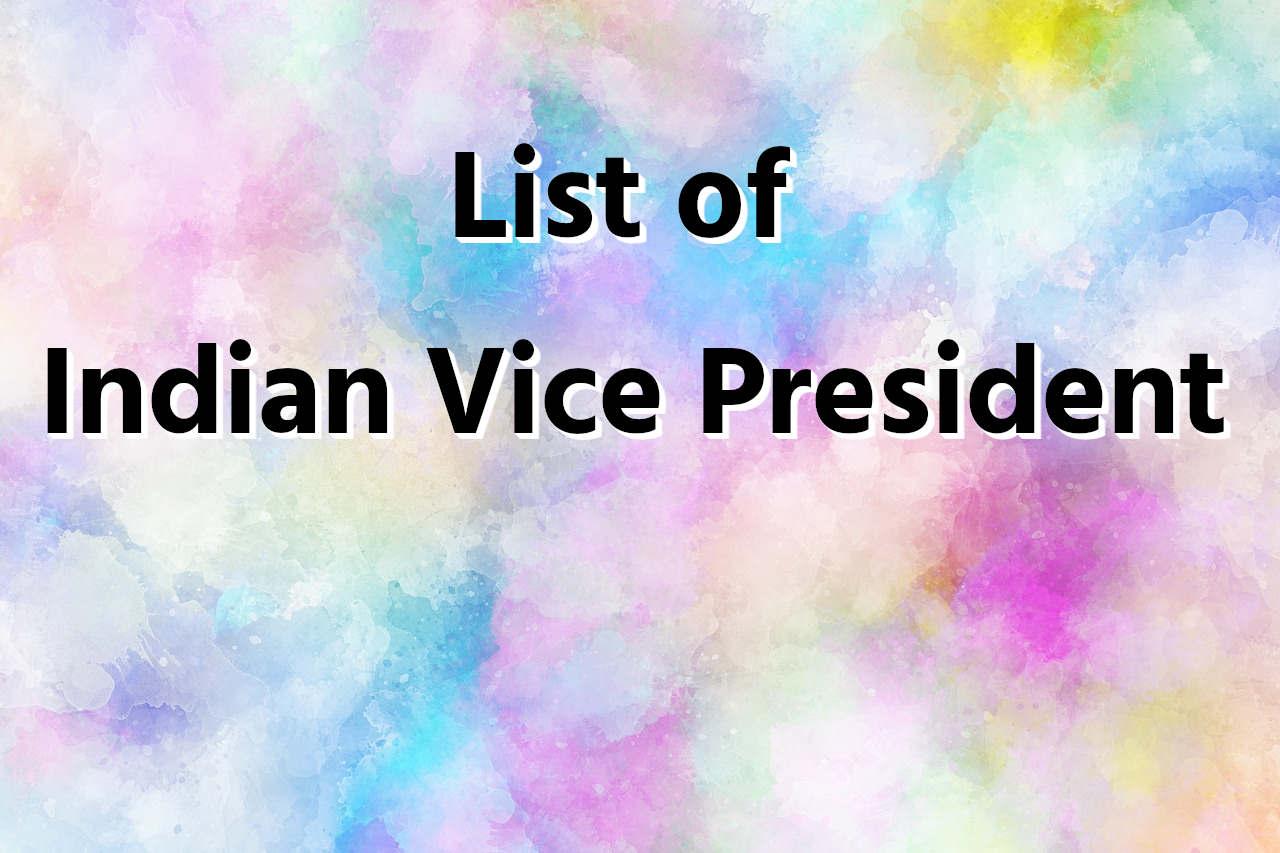
 General Knowledge2 years ago
General Knowledge2 years agoList of Indian Vice President




